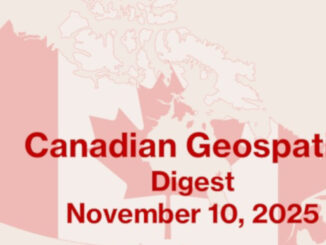With popular holiday gift comes great responsibility
OTTAWA, Dec. 11, 2015 /CNW/ – Drones, also known as unmanned air vehicles, are sure to be a popular gift this holiday season. With ownership comes great responsibility, and new operators must learn how to fly safely and legally. This holiday season, Transport Canada encourages all new drone users to consult the wide variety of educational tools available on www.tc.gc.ca/SafetyFirst.
Recreational drone operators should:
- Fly their drone during daylight and in good weather (not in clouds or fog).
- Keep their drone in sight, where they can see it with their own eyes – not only through an on-board camera, monitor or smartphone.
- Make sure their drone is safe for flight before take-off. Check if the batteries are fully charged and if it is too cold to fly.
- Respect the privacy of others – avoid flying over private property or taking photos or videos without permission.
Recreational drone operators should not fly:
- Closer than 9 km from any airport, heliport, or aerodrome.
- Higher than 90 metres above the ground.
- Closer than 150 metres from people, animals, buildings, structures, or vehicles.
- In populated areas or near large groups of people, including sporting events, concerts, festivals, and firework shows.
- Near moving vehicles, highways, bridges, busy streets or anywhere they could endanger or distract drivers.
- Within controlled or restricted airspace including near or over military bases, prisons, and forest fires.
- Anywhere they may interfere with first responders
Anyone using a drone for commercial or research purposes must hold a Special Flight Operations Certificate (SFOC) from Transport Canada, unless they are able to meet all the strict safety conditions required for an exemption.
All drone operators, regardless of the size of the device or how it will be used, are expected to fly safely and legally. Everyone must respect the Canadian Aviation Regulations, the Criminal Code, and all provincial, territorial and municipal laws governing areas such as privacy and trespassing.
Quick Facts
- People who operate drones for the fun of flying (recreational use) do not require an SFOC unless it weighs more than 35 kg.
- Anyone who operates a drone in a reckless and negligent manner; violates controlled or restricted airspace; or endangers the safety of manned aircraft could face fines of up to $25,000 and/or prison.
- Canada is a world leader in unmanned air vehicle (UAV) safety and has had regulations governing their use since 1996.
- Transport Canada is exploring changes to the regulations that will address the growing popularity and economic importance of UAVs and integrate them safely into Canadian airspace.
- In 2014, Transport Canada issued 1,672 SFOCs for UAVs, up from 345 in 2012.
Quote
“Many Canadians will receive drones over the holidays this year, and all new users should learn how to fly them safely and legally before enjoying their new gift. Ensuring people in the skies and on the ground stay safe is a shared responsibility—always think safety first.”
The Honourable Marc Garneau
Minister of Transport
Associated Links
- Media: download high resolution video and audio clips on drone safety featuring the Minister of Transport: http://www.tc.gc.ca/eng/mediaroom/video-menu#air
- Transport Canada videos on drone safety: https://www.youtube.com/watch?v=THzMLPLgVQs&list=PLkwr4BMsx126wVsculhAHGYWFOjKLnalV
Transport Canada is online at www.tc.gc.ca. Subscribe to e-news or stay connected through RSS, Twitter, Facebook, YouTube and Flickr to keep up to date on the latest from Transport Canada.
This news release may be made available in alternative formats for persons living with visual disabilities.
SOURCE Transport Canada 
For further information: Office of the Honourable Marc Garneau, Minister of Transport, Ottawa, 613-991-0700; Media Relations, Transport Canada, Ottawa, 613-993-0055




Be the first to comment